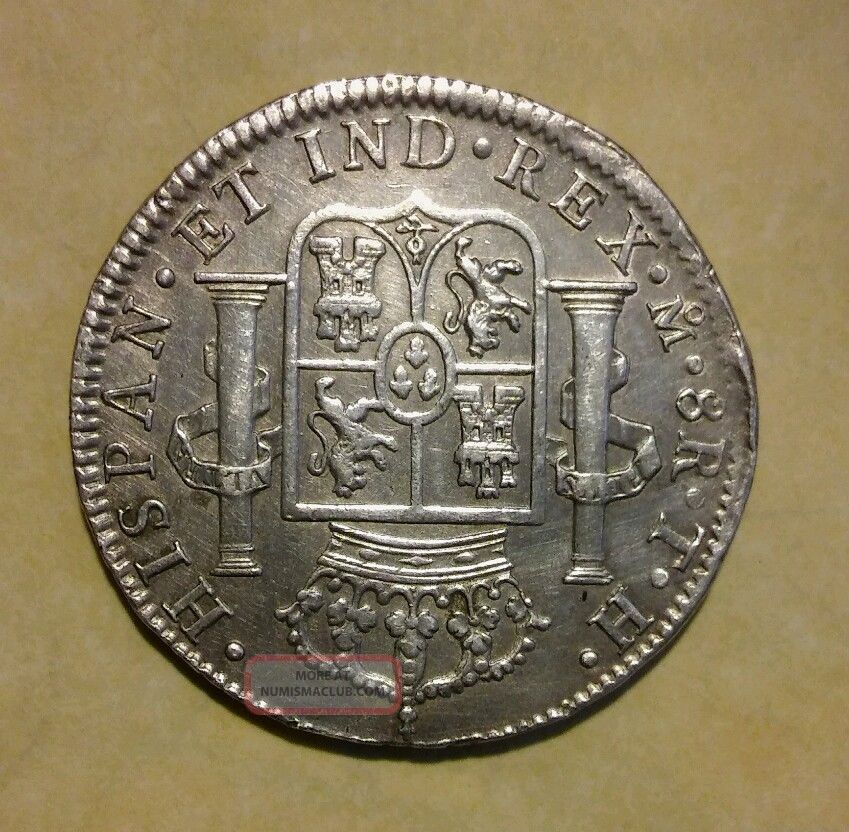Determining the Value of a Historical Spanish Piece of Eight Coin
Early History and OriginsPermalink
The piece of eight, also known as the Spanish dollar, was the first widely circulated currency in the Americas and parts of Asia during the colonial period in the 16th to 19th centuries. Coined in Spain and Mexico, it contained approximately 1 ounce of 0.925 silver and was valued at eight reales. This silver coin became popular for international trade and served as prototypes for later coins like the US dollar. In its early circulation, the piece of eight was often cut into fractional pieces called bits to allow for smaller transactions. A quarter piece of eight was equivalent to two bits or a quarter dollar, helping to explain the origin of this modern monetary term. While worn and clipped coins remained legal tender, their diminishing silver content over time led some nations to introduce their own local coinage.

Uses as Currency in the Americas and BeyondPermalink
Despite new competing currencies, the piece of eight remained dominant in many territories well into the 18th century. In North America, it circulated widely and established the Spanish dollar standard that the original US dollar was later pegged to in 1792. Further south, it was the chief currency in Central and South American Spanish colonies for international and domestic commerce. Across the Atlantic, it also gained popularity in parts of Europe, Africa and Asia through extended global trade networks. Notable trading partners like China, India and the Arab world readily accepted the coin due to its silver purity and established exchange rates. Even after the rise of other colonial powers, remnants of the Spanish piece of eight could still be found serving as money well into the 19th century in former Spanish territories and British North America.
Determining Value Based on Condition and RarityPermalink
For coin collectors and investors today, the value of an original piece of eight is determined by careful examination of multiple factors about its history, condition and availability in the market. A coin’s age, provenance details, markings and design variations can help identify mint origin and provide clues about authenticity. Well-preserved specimens with limited wear and damage on high-relief designs from the 16th-18th centuries will typically appraise for more. However, extensive clipping, corrosion or tampering can drastically reduce the assessed worth. Relative rarity and demand must also be considered against surviving coin populations. Key date and mint variation pieces in top grades can be highly valuable, often retailing for thousands of dollars or more. Meanwhile, more prevalent later issue coins may have values ranging from just $100 upwards depending on attributes. Expert certification is usually required to confirm grading accuracy for valuable coins. The final determined value is what a willing buyer agrees to pay a willing seller based on observable quality factors as well as collectible appeal and potential future appreciation. Periodic market fluctuations from increasing collector interest can further influence pricing over time. It is always best to consult with experienced coin dealers and get professional opinions for accurate appraisals.
Case Studies of Past Piece of Eight AuctionsPermalink
To understand real-world pricing, examining past successful auction results provides helpful benchmark comparisons. Here are a few notable examples:
In 2016, a rare 1603 Seville 8 Reales graded Mint State 63 brought $96,000 at a Florida United Numismatists auction. Characterized by its enchanting fully raised design in nearly pristine state, it highlighted the potential for condition census coins.
Just this year, an early 1574-G Mexico City 8 Reales sold privately for a reported $150,000, showcasing investor confidence in classic world coin rarities regardless of grade. Its strong provenance added to desirability.
More commonly, mid-grade circulating examples in the Good/Very Good classifications realize prices of $200-$1,000 depending on date, fullness of design features and any historical context. Bulk shipwreck recovery coins often fall into this range.
These past transactions provide guidance on current collector priorities and how condition truly impacts value when considering opportunity to acquire important colonial-era coinage specimens.
How to Determine Your Own Coin’s WorthPermalink
For anyone fortunate to own an authentic piece of eight coin, the best approach is professional authentication before establishing a sale or insurance valuation. Reputable dealers can examine physical traits with expertise beyond home research abilities. Some recommendations:
- Locate a nearby numismatics expert or auction house dealing in Spanish coinage through online directories or shows
- Bring the coin still enclosed to preserve surface integrity; carefully package otherwise
- Be prepared to leave contact details for a formal appraisal and certification upon visual inspection
- Request comparable market price ranges based on similar graded specimens sold publicly
- Inquire about authentication/conservation services if preservation could enhance value
- Get multiple opinions when possible for comparative perspectives
With care and diligence, a precise understanding of one’s own piece of eight coin’s historical significance and estimated worth can be achieved through the experience of vetted specialists in the field. Proper due diligence always preserves maximum potential investment upside too.
Let me know if any part needs clarification or expansion to better summarize determining the value of authentic colonial Spanish piece of eight coins based on condition, rarity and marketplace transactions. I’m happy to elaborate further on this fascinating numismatic topic.

